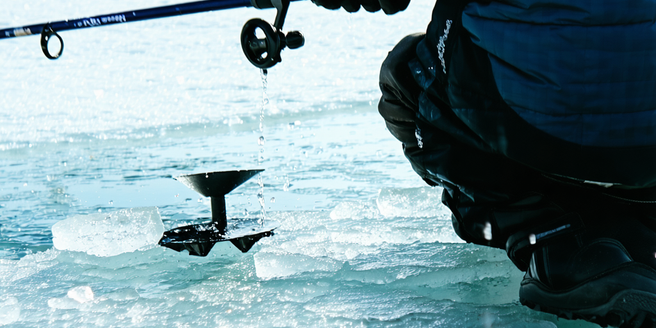
Understanding Ice Fishing Gear and Equipment
Ice fishing requires specialized gear to optimize both safety and success. Essential equipment includes an ice auger for drilling holes, specialized ice fishing rods and reels, and sleds for transporting gear across frozen lakes. Equipment like a fishfinder can be invaluable in locating fish beneath the ice. Proper clothing, including waterproof boots, thermal suits, and insulated gloves, is crucial to protect against the cold. Ice shelters or portable fishing tents offer protection from wind and extreme cold, enabling longer fishing sessions. Investing in quality gear can significantly improve your ice fishing experience, ensuring comfort and increasing the likelihood of a successful catch.
Best Practices for Safe Ice Fishing
Safety is paramount in ice fishing. Ensure the ice is at least 4 inches thick for walking and 5-7 inches thick for snowmobiles. Always check local ice conditions and weather forecasts. Carry ice picks or ice claws to help rescue yourself in case of a fall through the ice. Wear a life jacket or a floatation suit as a precaution. Fish with a buddy and let someone know your fishing plans. Avoiding areas with currents, cracks, or holes is wise, as they can be dangerous. Having basic first-aid supplies and knowledge is also essential in case of emergencies.
How Weather Affects Ice Fishing Success
Weather conditions drastically impact ice fishing success. High-pressure systems often result in clearer skies and active fish, whereas low-pressure conditions, such as snowstorms, can make fish less likely to bite. It’s important for anglers to stay informed and adaptable to changing weather conditions. Cold fronts usually bring excellent fishing opportunities as fish become active before the temperature drops significantly. Additionally, wind can influence fish movement, as it often pushes food sources, drawing fish towards certain areas. Monitoring barometric pressure and being aware of weather patterns makes it possible to adjust tactics for better outcome and improve the odds of a fruitful fishing session.
Tips for Staying Warm During Ice Fishing
Keeping warm during ice fishing is crucial. Layering clothing, using moisture-wicking materials, and covering extremities can prevent cold-related issues. It is advisable to wear thermal base layers, a mid-layer for insulation, and a windproof outer layer. Don’t forget to check the weather forecast before heading out, as conditions can change rapidly. High-quality insulated boots and gloves are a must. A good hat will also help retain body heat. Consider hand warmers and hot beverages to maintain body heat. A portable heater can provide warmth inside ice shelters, making long periods of waiting more comfortable. Ensuring you are warm enough can make ice fishing more enjoyable and safe.
Species of Fish Commonly Found in Icy Waters
Icy waters are home to various fish species well-adapted to cold conditions, including walleye, northern pike, perch, and trout. These fish are popular targets for ice anglers due to their prevalence and the challenge they present. The beauty of a winter landscape adds to the allure of ice fishing. Walleye is known for its elusive nature, while northern pike is admired for its fight. Perch, often found in schools, are a favorite for novice anglers. Lake trout, inhabiting deeper waters, are prized for their size. Understanding the behavior and seasonal patterns of these species enhances the ice fishing experience.
Environmental Impact of Ice Fishing on Lakes
Ice fishing can impact aquatic ecosystems. The practice contributes to litter, particularly plastic waste, which affects water quality and harms marine life. Noise pollution from vehicles and equipment can disturb fish and wildlife. Ice thickness can vary significantly, making it crucial for anglers to be aware of safety guidelines. Additionally, the physical presence of anglers and their shelters can disrupt natural habitats. Furthermore, ice fishing can lead to overfishing if not properly regulated, altering the species composition and balance. Responsible anglers prioritize sustainable practices by cleaning up after themselves, respecting catch limits, and using eco-friendly equipment. Regular assessments and adherence to regulations help minimize negative consequences on lake environments.
